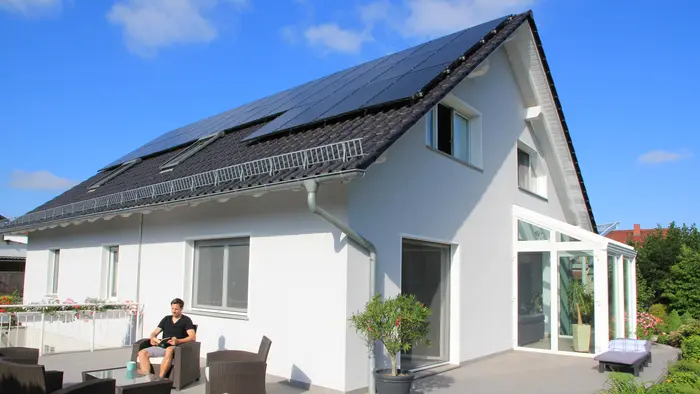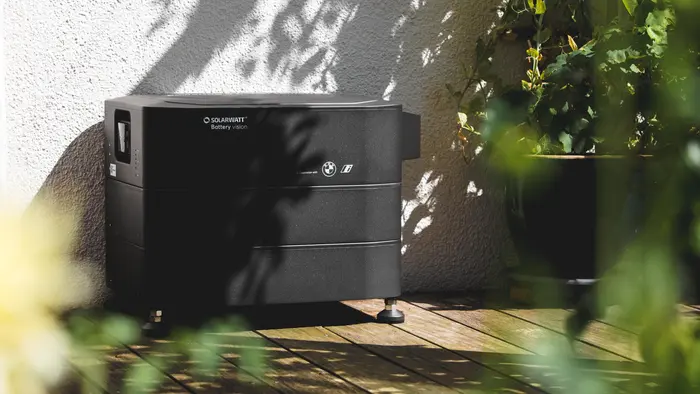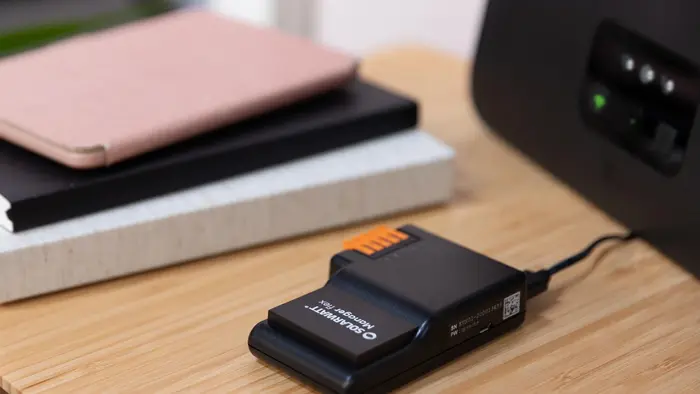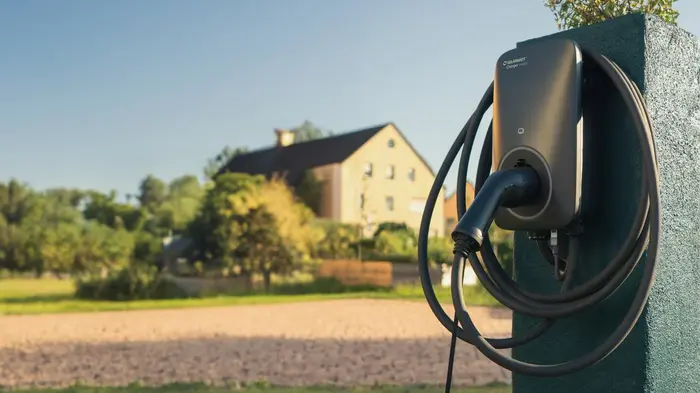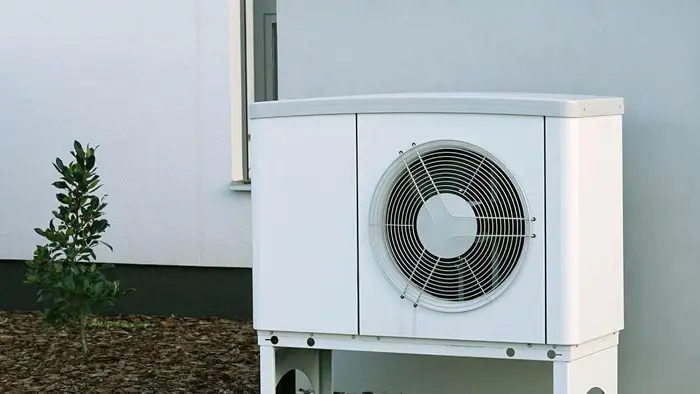Smart home: a networked, intelligent home
What is a smart home?
The definition of the term smart home encompasses aspects such as the networking of different devices, the equipping of living spaces with sensors and information technology and the aim of creating a comfortable, secure and energy-efficient home. In simple terms, a smart home is an "intelligent home" in which electronic devices are networked and processes are automated in such a way that they make everyday life easier for the residents.
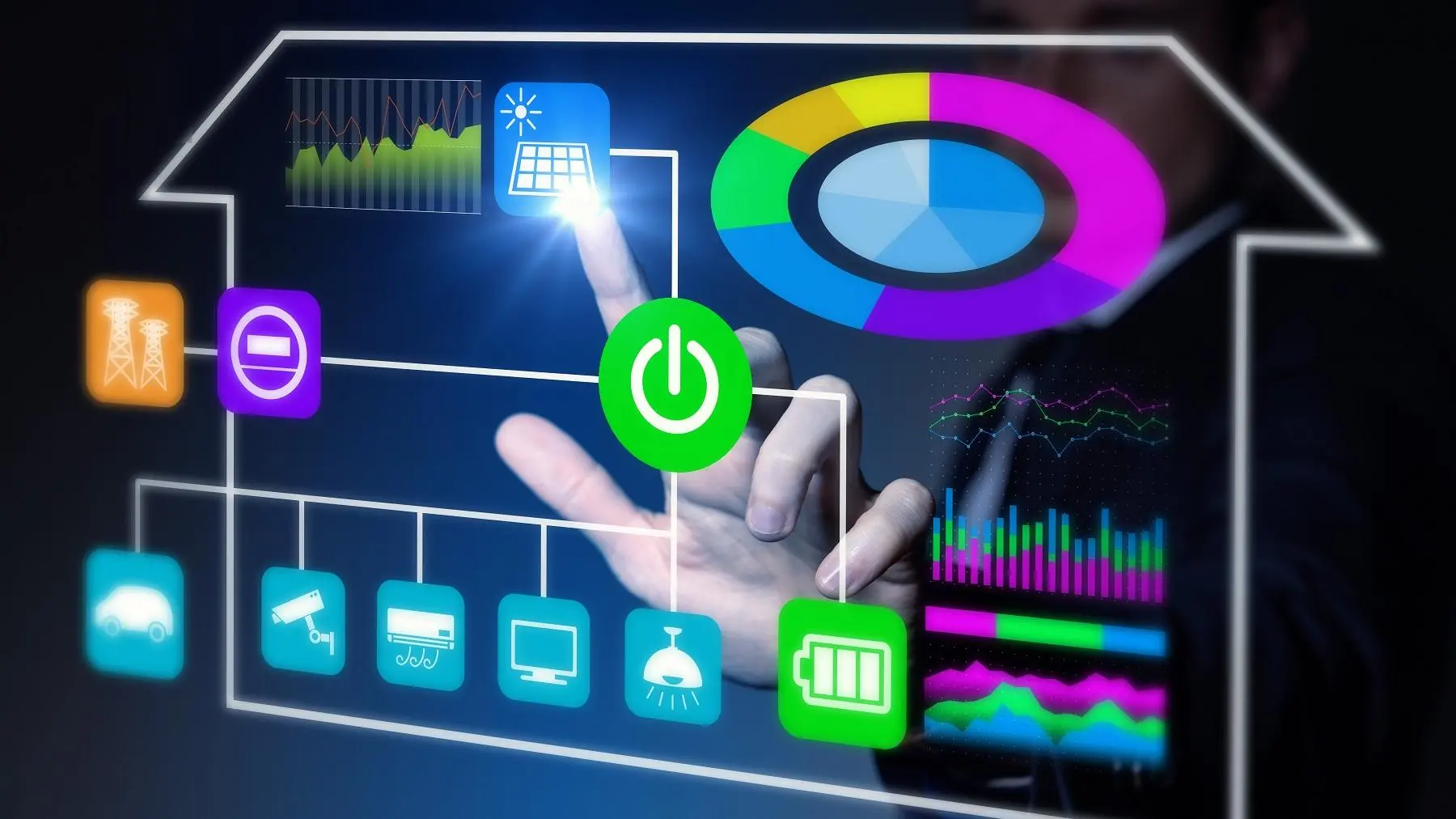
Most people are already familiar with applications similar to those used in the smart home from their everyday lives. For example, smart wristwatches count the number of steps taken per day, measure the pulse or body temperature and pass this information on to apps that compile the data in health evaluations. Or users can monitor their income and expenditure via smartphone, obtain an overview of their finances and receive recommendations for the future based on this information.
Smart home applications work in a similar way. However, due to the large number of devices that can be networked with each other, the potential is far greater. A smart home offers opportunities to
- significantly increase living comfort,
- protect your own home from damage and break-ins and
- Save money thanks to efficient use of energy.
An overview of the possibilities in the smart home
In the smart home numerous devices can be operated remotely - from the sofa or even from outside - thanks to simple control via app or voice command. This opens up many useful smart home applications:
- Not sure if the stove is really switched off? You can easily check this on the move using an app.
- The washing machine is damaged and water is leaking? Sensors detect this immediately and notify the homeowner.
- Is a storm is approaching while the windows are still open? Protective blinds can be closed remotely.
- Sensors report unexpected movements at the property? A camera gives homeowners a view from anywhere.
However, the potential of the smart home lies primarily in automation and the networking of different components with each other. An example that is no longer the stuff of science fiction:
When the alarm clock rings at a set time in the morning, coffee is already being made in the kitchen. At the same time, the light in the house is gradually and gently brightened using a dimmer. The blinds are raised. As soon as the residents leave the house, the doors lock automatically. The robot vacuum cleaner starts its work, and at lunchtime the washing machine, which had already been filled the previous evening, starts up. As no one is at home, the heating is turned down, but the temperature is raised back to a comfortable level in good time before the residents come home - where they are then greeted by their favorite music, which is switched on automatically.
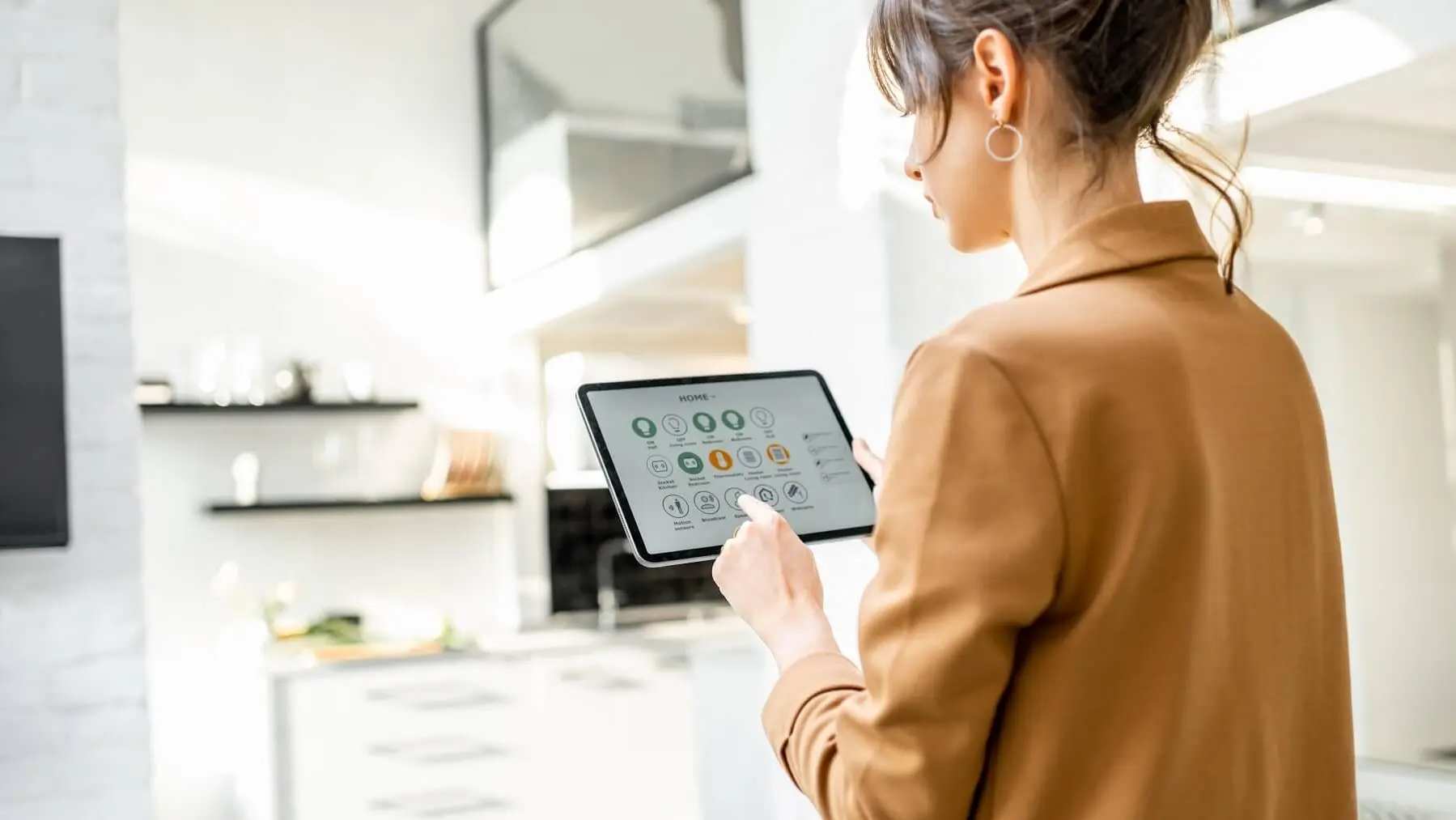
Smart home for beginners: ideas for home automation
For beginners, the idea of a smart home can seem overwhelming at first. However, a smart home does not have to be perfectly planned and automated. Rather, beginners can equip their smart home with a few initial applications and gradually add the components that suit their everyday life and also support their preferred area - comfort, security or energy efficiency - in the best possible way.
Here are some ideas for equipping a smart home in the relevant areas:
- Smart home ideas for more convenience: start the coffee machine at set times, use robot vacuum cleaners and mowers, program your favorite music, set soft lighting at certain times of day, set a comfortable temperature
- Security in the smart home: notice unexpected activities thanks to motion detectors, program presence simulation with lights and movable blinds, set up alarms and/or notifications when doors or windows are opened, alert neighbors in the event of smoke or fire
- Save energy with smart home applications: Automatically turn down the heating during the day, only switch on lights when there is movement, combine smart home with photovoltaic system, switch off electronic devices while on the move
Smart home for senior citizens: living independently with ambient assisted living
Ambient Assisted Living (AAL) is a special category among the possibilities of the smart home. Here, ideas for the smart home are geared towards senior citizens or people with disabilities so that they can organize their everyday lives as independently as possible.
AAL offers many possibilities, including, for example
- making an emergency call at the touch of a button or voice command, alerting relatives or establishing a voice connection by telephone
- recognise deviating or missing movements in everyday life and notify a trusted person
- Have tripping hazards well lit thanks to motion detectors, especially at night
- control height-adjustable worktops, kitchen cabinets, beds or toilet seats by remote control or voice command
- view the entrance area via camera when visitors arrive, open the entrance door by voice command and close it automatically
- automatically switch off the stove and other sources of danger after a certain period of non-use
- store appointments and other reminders and play them at a set time (to help with dementia)
These and many other options also make a smart home interesting for senior citizens. In some cases, ambient assisted living applications can make the difference between living at home and moving into a retirement or nursing home.
Smart home and photovoltaics: an efficient combination
Many smart home applications serve the purpose of energy efficiency, including intelligent heating control or lighting, for example. The combination of smart home and photovoltaics is particularly powerful, as the higher electricity consumption in the smart home can be at least partially covered by cheap solar power, so that a high level of self-consumption is achieved. The functionalities of the smart home enable consumers to be switched on and off, while the integrated sensors allow more complex scenarios to be designed and implemented.
By the way: Photovoltaic systems and intelligent energy management can also be combined without a Smart Home. At SOLARWATT, you can obtain complete packages consisting of PV plants, energy managers and home battery systems.
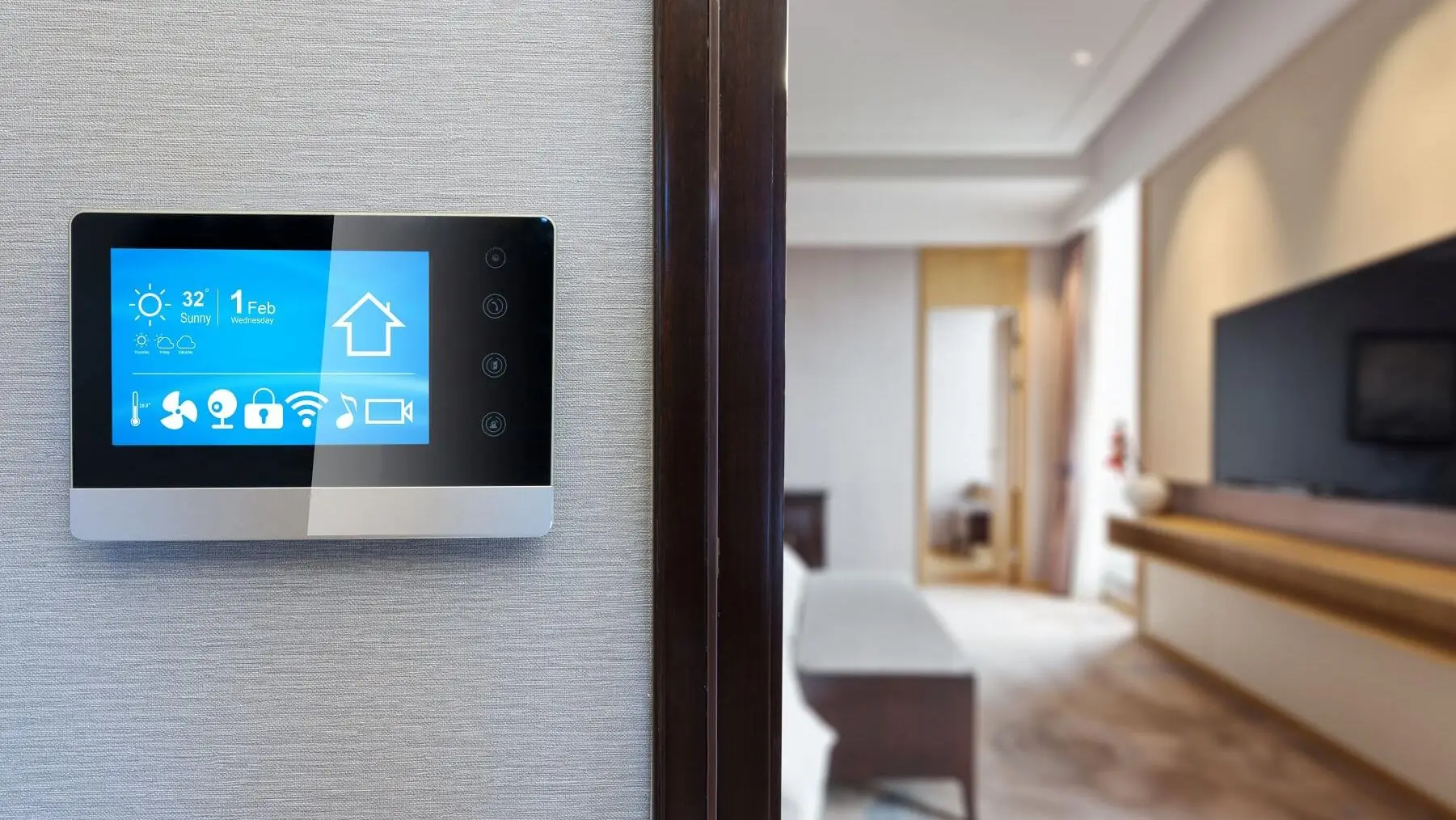
Data protection and data security in the smart home
Around 50% of people who do not want to convert their home into a smart home cite their privacy as the reason for not doing so. In fact, smart home applications collect a lot of data. This not only concerns personal data such as names, addresses, etc., but also data on preferences, habits, daily routines and so on. It is also possible that cyber attacks could be carried out on electronic door locks or cameras, for example.
But how should these risks be assessed? When it comes to the security of smart homes, a distinction must be made between data protection and data security. Data protection is subject to the General Data Protection Regulation (GDPR), which has regulated how data may be saved and processed since 2018. The ABIDA ("Assessing Big Data") research project, commissioned by the Federal Ministry of Education and Research, concludes that compliance with the GDPR regulations in smart homes is not practically feasible or at least not practical.
For example, the GDPR stipulates the minimisation principle, which states that the processing of personal data should be limited to what is absolutely necessary. However, a smart home thrives on collecting as much data as possible about its residents. Only in this way can the functions for comfort, energy saving and security be fully utilised. Other principles, such as the right to data portability, are also difficult to implement. This right should enable users to easily transfer their data from one provider to another. There are both technical hurdles and the providers' business secrets to consider here.
Ultimately, the rapidly advancing technology of smart home applications cannot currently be brought fully into line with the GDPR - and that is not the aim at all. It is therefore up to each individual to decide whether the advantages of a smart home outweigh the potential disadvantages in terms of data security.
In terms of data security and cybercrime, the ABIDA project considers smart homes to be fundamentally vulnerable. Users can take some measures to increase data security, but a security risk cannot be ruled out. Nevertheless, the project participants come to the following conclusion: "With careful and responsible use, enormous benefits can be gained from this emerging technology."
You can improve data security in your smart home with the following tips
- Change the default password of the Wi-Fi router and all devices connected to the internet: Use strong passwords for your devices (at least 16 characters, mix of lower and upper case letters, numbers and special characters). You can also secure many devices with additional two-factor authentication.
- Set up and activate firewalls on computers and the router.
- If possible, use a different home network for your smart home devices than for your PC. In an emergency, an attacker will not automatically have access to sensitive data on your computer if they have hacked into your smart home and vice versa.
- Use your Wi-Fi router's WPA2 password-protected security & encryption.
- Check what data is collected by apps on your smartphone.
- Regularly carry out all updates for smart home applications: If possible, activate the automatic updates on your device - this way you will always keep it up to date.
Setting up your smart home: What should you consider?
Ideally, a smart home should already be considered when building a house. In this way, cables can be laid in a space-saving and invisible way, which makes communication between the various devices much easier later on. Components such as controllable blinds can also be installed. Or sensors and actuators (which control the devices) can be aesthetically concealed, which would be time-consuming and cost-intensive in retrospect.
However, retrofitting is also possible, as smart home devices generally communicate wirelessly. Many people start with a few smart home applications and develop new ideas for home automation over time. The following tips will help with implementation:
- Pay attention to compatibility: Smart home devices and apps from different manufacturers do not necessarily have the same interfaces (APIs).
- Opt for open or closed interfaces: Open interfaces are multi-compatible and allow applications from different manufacturers to be combined. However, they are also more prone to errors. In contrast, closed interfaces offer more security and a smoother process - but at the expense of flexibility.
- Choose uniform wireless standards: Wi-Fi is available in almost all households. Bluetooth is also easily accessible, but only works over short distances. Other typical wireless standards are ZigBee, EnOcean and Z-Wave.
- Choose controls carefully: Voice commands, touchscreen or operation via app? Senior citizens or people with visual impairments need large, clearly visible controls. Touchscreens must necessarily be touched, while voice commands can also be given from a distance.
- Use a central gateway: Many smart devices can be operated via their own app. However, it is far more convenient to operate them via a single central control unit, the gateway. It networks all smart home applications and can be conveniently controlled via app, touchscreen or voice command.
- Use Wi-Fi sockets: A device is not inherently "smart"? No problem: Wi-Fi sockets can be controlled by smart applications and can therefore also control the power supply to non-smart devices.
Conclusion: A smart home offers extensive possibilities for making your own home safer, more comfortable and more energy-efficient. If you want to reduce your electricity costs in the long term, you should consider combining a photovoltaic system with a smart home.
